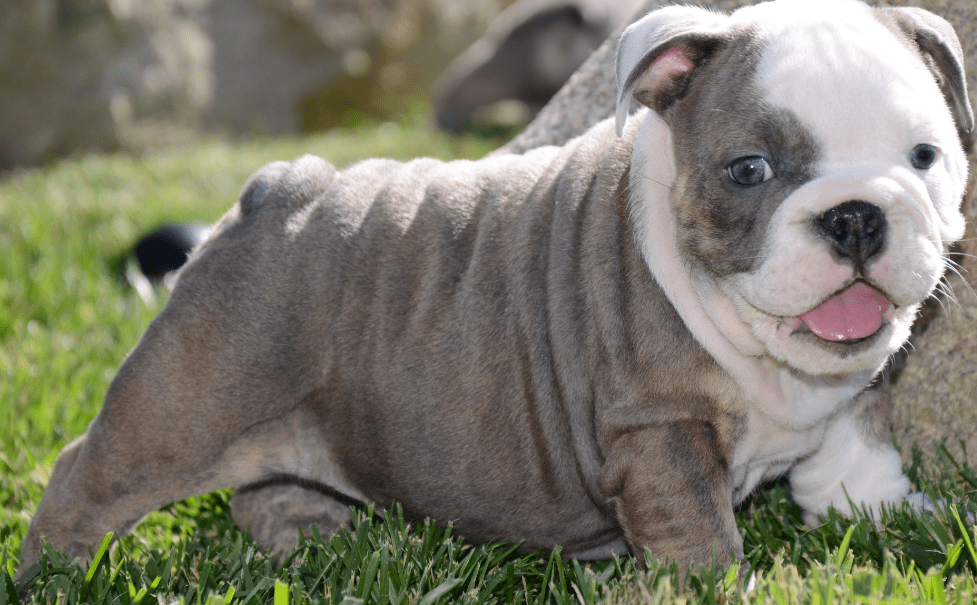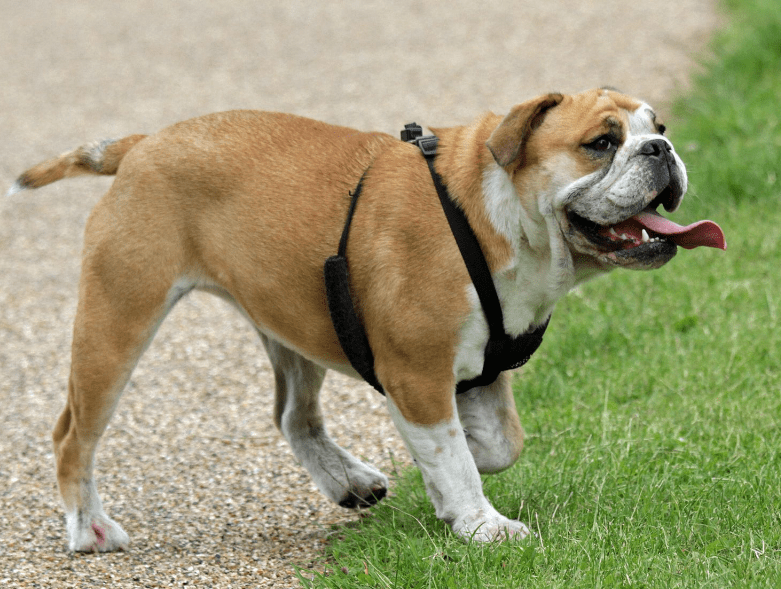The Blue English Bulldog is a rare and captivating variation of the traditional English Bulldog, known for its distinct blue-gray coat and endearing personality. This breed has gained popularity among dog lovers for its unique appearance, gentle temperament, and loyalty. In this article, we’ll explore the characteristics, care requirements, and history of the Blue English Bulldog, as well as answer some common questions about this fascinating breed.
What Makes the Blue English Bulldog Unique?
The Blue English Bulldog stands out due to its striking coat color, which ranges from a deep blue-gray to a lighter slate gray. This color is a result of a specific gene that dilutes the standard black pigment to create the blue hue. While the Blue English Bulldog shares many characteristics with the traditional English Bulldog, its coat color gives it a distinct and eye-catching appearance.
In reserve to their unique color, Blue English Bulldogs are known for their muscular build, wrinkled face, and characteristic pushed-in nose. Despite their somewhat intimidating appearance, these dogs are gentle, affectionate, and known for their loving nature.
Temperament and Personality
Blue English Bulldogs are known for their calm and laid-back temperament. They are excellent companions and are particularly well-suited for families, as they are patient and gentle with children. Despite their strong and muscular appearance, they are incredibly affectionate and thrive on human interaction. They are loyal to their families and often form strong bonds with their owners.
These dogs are also known for their stubbornness, a trait common in the Bulldog breed. While they can be a bit headstrong, with consistent training and positive reinforcement, Blue English Bulldogs can become well-behaved and obedient pets. They are generally friendly with other pets and can get along well with other dogs, especially if they are socialized from a young age.
Health and Care Requirements
Like all Bulldogs, the Blue English Bulldog has some specific health and care needs that potential owners should be aware of. Bulldogs are known for their brachycephalic (short-nosed) structure, which can lead to respiratory issues. It’s important to monitor their breathing, especially in hot or humid weather, as they can easily overheat. Providing a cool and comfortable environment is essential for their well-being.
Due to their unique body structure, Blue English Bulldogs can also be prone to joint issues and hip dysplasia. Regular vet check-ups, a balanced diet, and maintaining a healthy weight are crucial in preventing these problems. Additionally, their wrinkled skin requires regular cleaning to prevent infections, as dirt and moisture can accumulate in the folds.
Exercise is important for Blue English Bulldogs, but their activity level should be moderate. Short walks and playtime are usually sufficient to keep them healthy and happy. They are not particularly high-energy dogs and prefer lounging around the house over vigorous exercise.
Grooming and Maintenance
The Blue English Bulldog’s coat is short and smooth, making grooming relatively easy. Regular brushing will help to keep their coat in good condition and reduce shedding. Bathing should be done as needed, but it’s important not to over-bathe, as it can strip the natural oils from their skin.
In expansion to coat care, attention should be paid to their ears, eyes, and teeth. Regular ear cleaning can prevent infections, and keeping their eyes clean and free of debris is important due to their facial structure. Dental care is also essential, as Bulldogs can be prone to dental issues. Regular brushing and providing dental chews can help maintain their oral health.
The History of the Blue English Bulldog
The Blue English Bulldog is a modern variation of the traditional English Bulldog, which has a rich history dating back to the 1500s in England. Originally bred for bull-baiting, a brutal sport where dogs were pitted against bulls, the Bulldog was known for its strength, tenacity, and courage.
After bull-baiting was outlawed in the 19th century, the Bulldog’s role shifted from a fighting dog to a companion animal. Breeders focused on developing a more docile and friendly temperament, leading to the affectionate and loyal Bulldog we know today. The Blue English Bulldog emerged as a rare color variation, becoming highly sought after for its unique appearance and loving nature.
Finding a Blue English Bulldog
Due to their rarity, finding a Blue English Bulldog can be challenging. It’s important to work with a reputable breeder who prioritizes the health and well-being of their dogs. Potential owners should ask for health clearances and be aware of the specific needs of the breed.
Adoption is also an option, though Blue English Bulldogs may be less common in shelters. However, rescue organizations that specialize in Bulldogs may occasionally have blue variations available for adoption.
FAQs About Blue English Bulldogs
1. Are Blue English Bulldogs different from regular English Bulldogs?
Blue English Bulldogs are not a separate breed but a color variation of the standard English Bulldog. They share the same physical characteristics, temperament, and care requirements as other English Bulldogs, with the primary difference being their distinctive blue-gray coat.
2. Are Blue English Bulldogs good with children?
Yes, Blue English Bulldogs are known for their gentle and patient nature, making them excellent companions for families with children. They are affectionate and protective, often forming strong bonds with the youngest members of the family.
3. How do I care for a Blue English Bulldog’s coat?
The Blue English Bulldog’s short, smooth coat requires regular brushing to keep it in good condition. Bathing should be done as needed, and special attention should be given to cleaning the folds of their skin to prevent infections.
4. What health issues are common in Blue English Bulldogs?
Like all Bulldogs, Blue English Bulldogs can be prone to respiratory issues due to their brachycephalic structure, as well as joint problems like hip dysplasia. Regular vet check-ups, a balanced diet, and proper exercise are important for maintaining their health.
5. Where can I find a Blue English Bulldog?
Blue English Bulldogs are rare, so it’s important to find a reputable breeder or check with Bulldog rescue organizations. Ensure that the breeder provides health clearances and prioritizes the well-being of their dogs.
Conclusion: The Blue English Bulldog as a Companion
The Blue English Bulldog is a unique and lovable companion, known for its striking appearance and gentle temperament. While they require specific care due to their unique health needs, their affectionate nature and loyalty make them a beloved pet for those willing to provide the necessary care and attention. Whether you’re drawn to their rare blue-gray coat or their endearing personality, the Blue English Bulldog is sure to be a cherished addition to any home.


